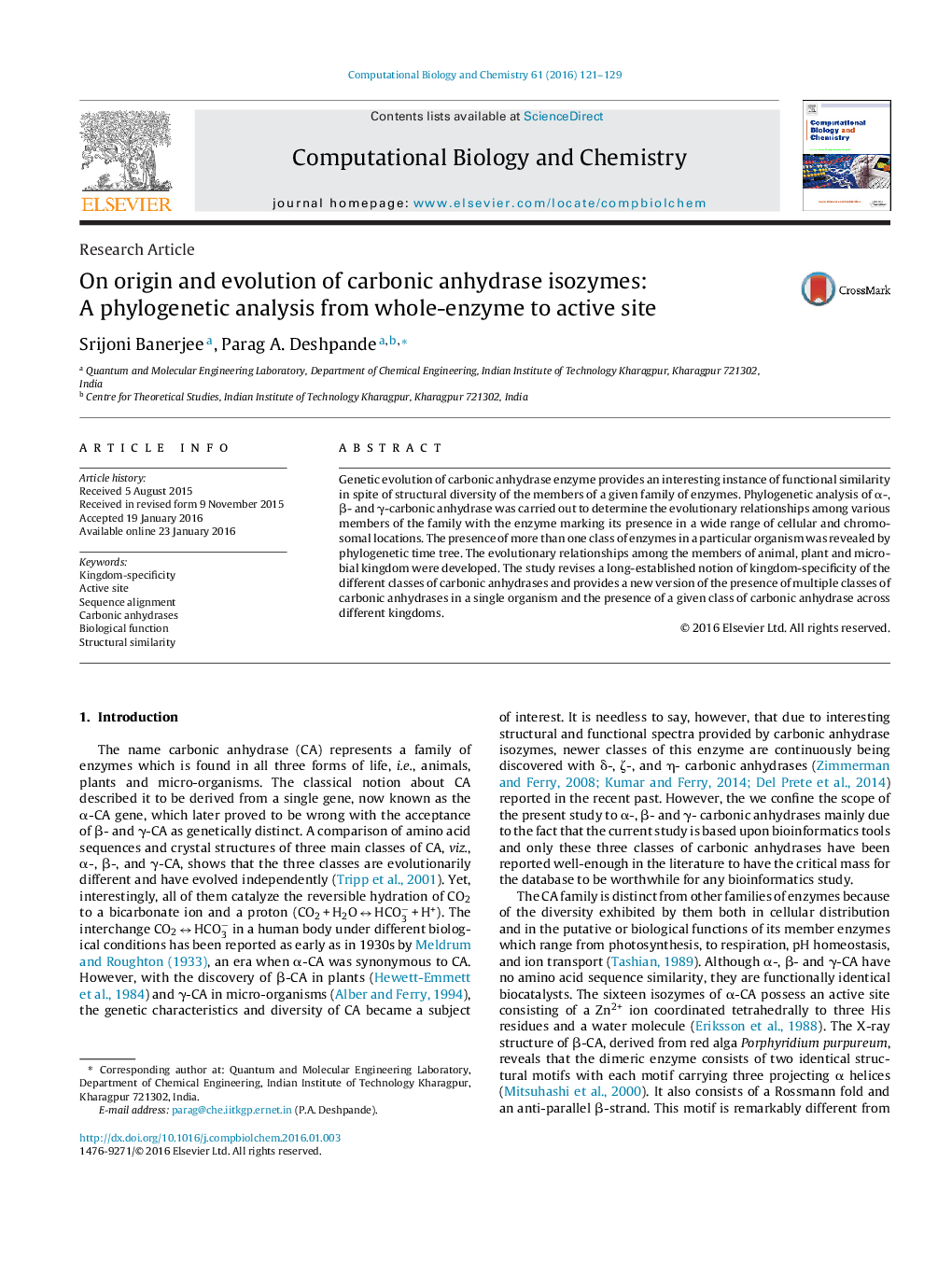| کد مقاله | کد نشریه | سال انتشار | مقاله انگلیسی | نسخه تمام متن |
|---|---|---|---|---|
| 14936 | 1362 | 2016 | 9 صفحه PDF | دانلود رایگان |
• Phylogenetic analysis of isozymes of carbonic anhydrase family was carried out.
• Kingdom-specificity of the members of the family was explored.
• All the members of the family were discovered to be present in all three forms of life.
• Evolution of active site across different classes of the members was carried out.
• Similarity of sequences in the proximity of Zn ion was proposed to be responsible for functional similarity.
Genetic evolution of carbonic anhydrase enzyme provides an interesting instance of functional similarity in spite of structural diversity of the members of a given family of enzymes. Phylogenetic analysis of α-, β- and γ-carbonic anhydrase was carried out to determine the evolutionary relationships among various members of the family with the enzyme marking its presence in a wide range of cellular and chromosomal locations. The presence of more than one class of enzymes in a particular organism was revealed by phylogenetic time tree. The evolutionary relationships among the members of animal, plant and microbial kingdom were developed. The study revises a long-established notion of kingdom-specificity of the different classes of carbonic anhydrases and provides a new version of the presence of multiple classes of carbonic anhydrases in a single organism and the presence of a given class of carbonic anhydrase across different kingdoms.
Figure optionsDownload as PowerPoint slide
Journal: Computational Biology and Chemistry - Volume 61, April 2016, Pages 121–129
